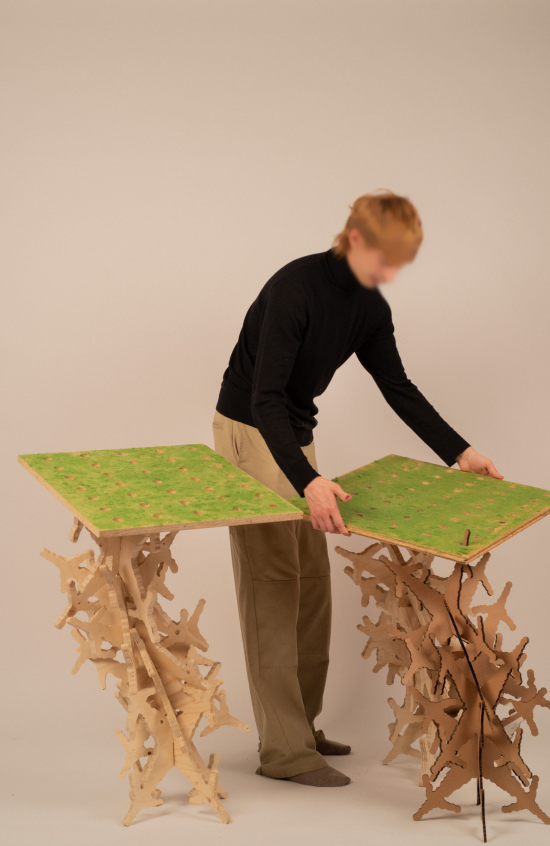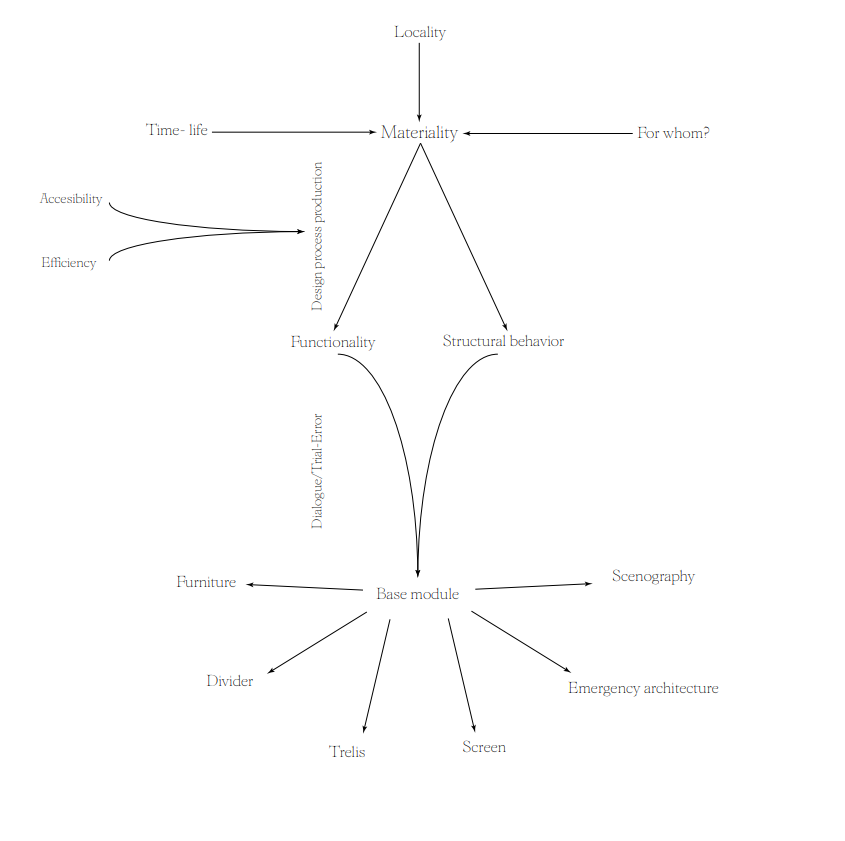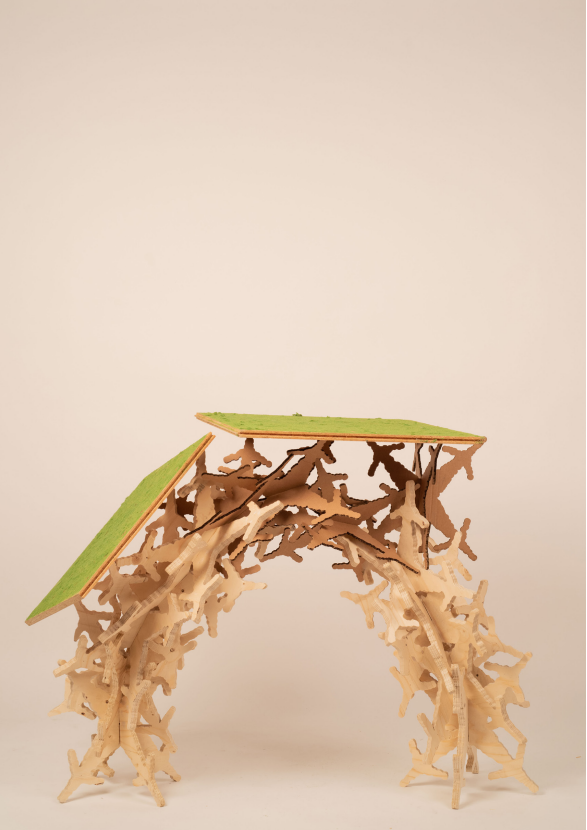





















Considering and acknowledging the instability of the forces shaping the actual global context is a way to reconfigure the value of impermanence upon permanence in the architectural field. While Western traditional rigid constructions lack resilience, thus they cannot adjust and accomodate constant-changing needs, granular architecture is a structural solution that mimics granular matter. The modules have a designed shape to build their support upon friction as a binder to attach themselves. In this context hazard becomes a fundamental agent. This system is a pattern resulting from the communication between the dynamic feedback of human agency and environmental forces, which opens a dialogue joining together the elements of a construction, the construction itself and the context in which the construction is built. Granular architecture is not only a tool to build, but it can become also a political medium to reclaim spaces. Designing a trial/error process originated from the material to see of it affecting the structural behaviour and the functionality of the system. The range is going from plywood and low-tech processes to granular matter like clay, lime dust, fibers, cardboard and acrylic. This study highlights the importance of integrating material thinking to system-design. The materials chosen are coming from three questions: locality, time/life-span and for whom are the structure serving. It also includes a question of efficiency and accessibility towards the material. Retrospectively this research is in my sense essential to design systems. Opening the possibilities but also revealing the cracks of the design.